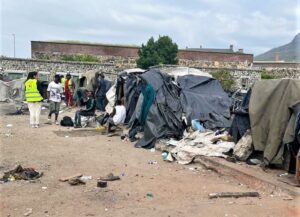As the nation contends with a myriad of economic pressures, including inflation, escalating interest rates, and looming recession fears coupled with a cost-of-living crisis, the impact on the populace has been palpable throughout the year.
Escalating Food Prices: A Glimpse Through Monthly Data
The Pietermaritzburg Economic Justice & Dignity Group (PMBEJD) provides a detailed look into the financial strain experienced by households via the Household Affordability Index. The average costs of a household food basket from January to November are as follows:
| Month | Average Cost (ZAR) |
|---|---|
| January | 4,917 |
| February | 4,928 |
| March | 4,966 |
| April | 5,023 |
| May | 5,071 |
| June | 5,956 |
| July | 5,081 |
| August | 5,123 |
| September | 5,155 |
| October | 5,297 |
| November | 5,134 |
The data reflects a consistent upward trend in food costs, significantly impacting the daily lives of South Africans.
Coping Mechanisms Amidst Financial Strain
In the face of soaring food prices, individuals, particularly those unemployed or with unstable employment, have adopted unconventional methods to sustain themselves. A tuckshop owner from Folweni, KwaZulu Natal, shared with IOL his adapted business approach to meet the community’s needs.
“Things are bad. People here now buy cooking oil by the spoon because they can only afford to cook one meal. Others get a cup of rice instead of a pack because they want to have a meal before they go to sleep,”
he revealed, highlighting the dire circumstances.
A customer, preferring anonymity, expressed his struggle to IOL. Relying on sporadic construction work and the inconsistent R350 Social Relief of Distress Grant, he voiced the humiliation and desperation faced by many.
“It is embarrassing to not even be able to feed yourself and have to be a nuisance to others by constantly asking for help. It is degrading,”
he lamented, further noting the detrimental effects of rising prices on community well-being and the alarming turn of some towards substance abuse as a coping mechanism.
Housing and Utility Challenges
Homeowners haven’t been spared from the economic turmoil. The first half of the year saw a gradual increase in interest rates, stabilizing only in July. Despite a slight downward revision in inflation forecasts by the South African Reserve Bank (SARB) to an average of 5.9% for 2023, the relief is minimal for those grappling with significantly higher home loan repayments.
Adding to the financial distress, South Africans have endured extensive load shedding, compelling business owners to invest heavily in backup solutions. One such individual, a franchisee of the Mozambik restaurant, shared his ordeal of spending over R600,000 to maintain operations during power outages, a situation that still leaves his business’s future uncertain.
Reflecting on the Economic Landscape
As South Africans navigate these challenging times, the collective resilience and adaptability are evident, yet the need for sustainable solutions and support is more crucial than ever. The personal stories and data reflect a broader narrative of a nation striving to endure and overcome an array of economic adversities.

















